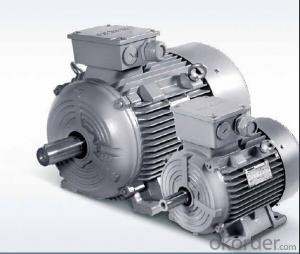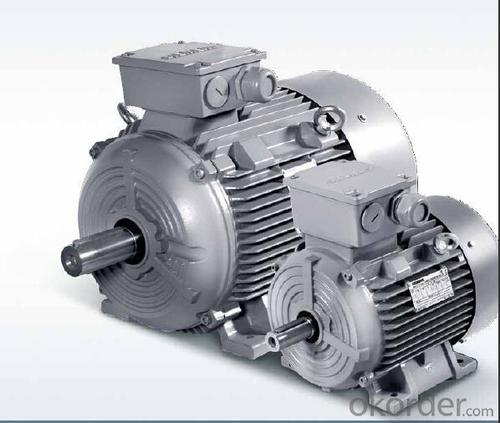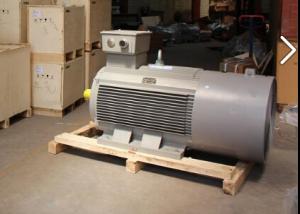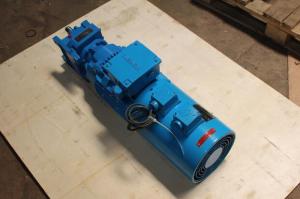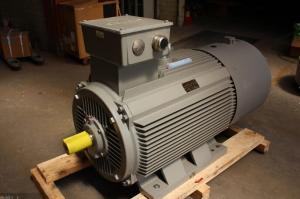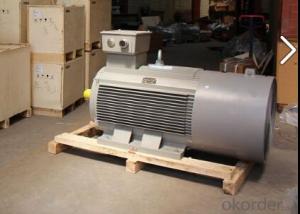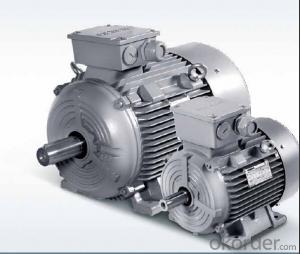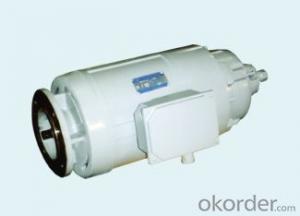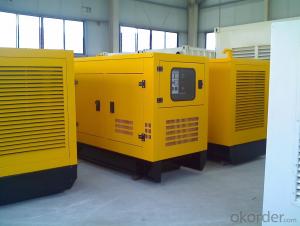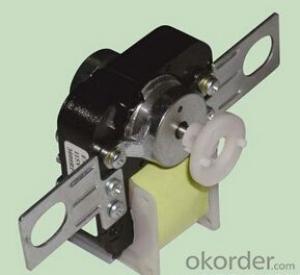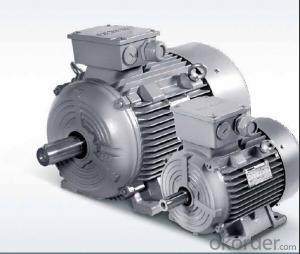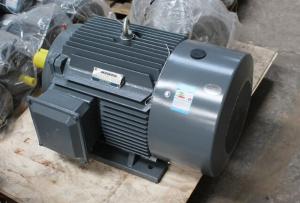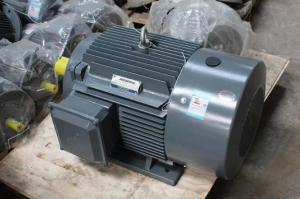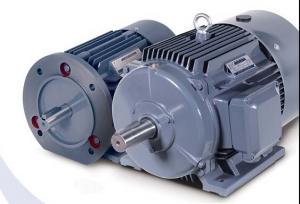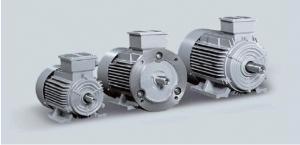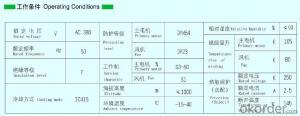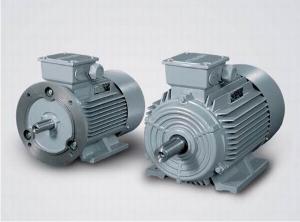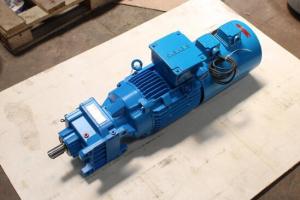Siemens AC High Low Voltage Motor ILE0001 Series
- Loading Port:
- China Main Port
- Payment Terms:
- TT OR LC
- Min Order Qty:
- -
- Supply Capability:
- -
OKorder Service Pledge
Quality Product, Order Online Tracking, Timely Delivery
OKorder Financial Service
Credit Rating, Credit Services, Credit Purchasing
You Might Also Like
| part name | brand | model | Voltage | protection | cooling | |
| motor | Siemens | 1LA8 | 1PQ8 | 400V,690V,2.3KV,4.16KV,6KV | IP55 | IC411 (1LA8,1LA4) |
| IC416 (1PQ8,1PQ4) | ||||||
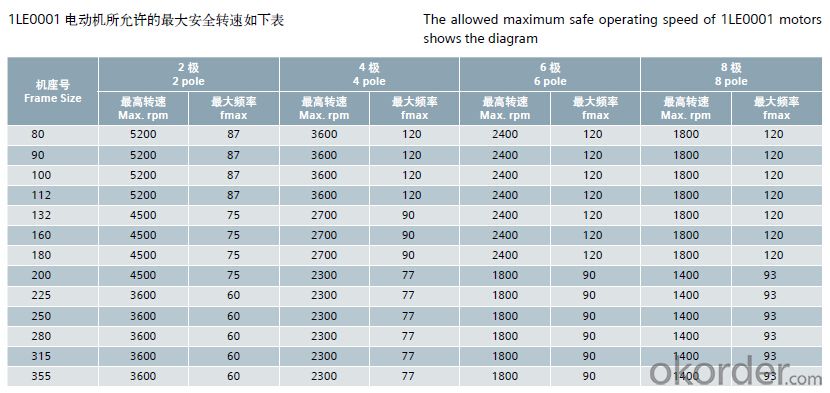
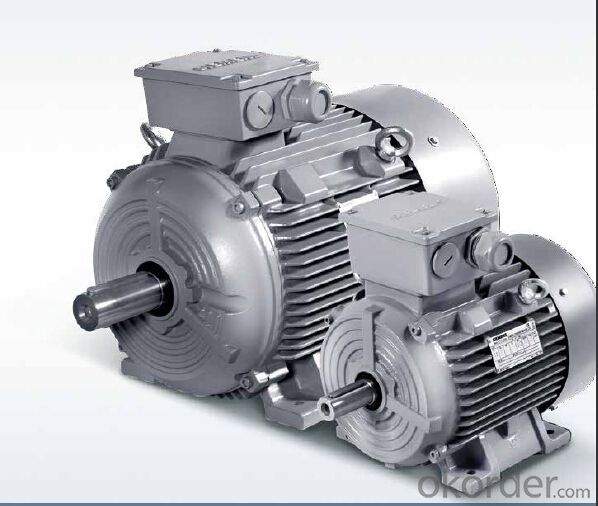
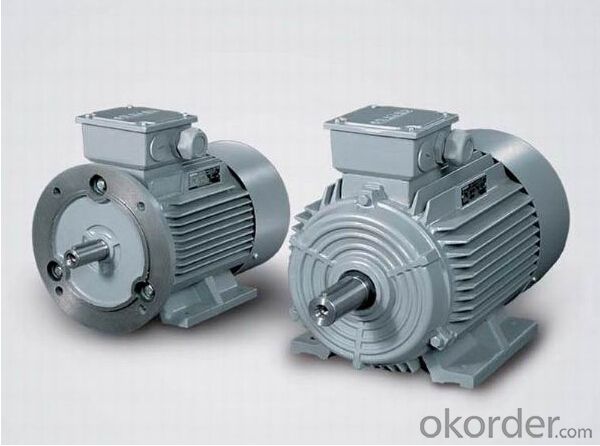

- Q: From what I remember about AC motors, one cannot lower the voltage to slow it down- it must be the frequency that is lowered. However, I have an AC wall fan which slows down when the voltage in my house drops. Whenever a microwave or similar high-current load is on the voltage drops slightly and I always notice the fan motor slowing or speeding up when the load turns on and off. Why is it doing this? I am assuming that it is not good for the fan but seeing that it has been running this way for years it must not be that detrimental to it...
- AC motors as the name implies is run using AC/alternating current.. this is best represented by a sinusoidal graph with time in the horizontal axis and voltage or current in the vertical axis.. motors uses the current to produce power which drives whatever it is that's attached to the motor.. power is directly proportional to either voltage or current.. because of this, low voltage/current produces low power and vice versa.. this is the reason why your fan slows down when voltage drops..
- Q: What is the stator voltage and current of an AC motor? And what is the current and voltage of the rotor?
- The brand name is the stator parameter, the rotor voltage is very low, but the current is very large, about several times of the stator current.
- Q: blower does not come on with switch and fuse is good.
- Should be in the right rear quarter area
- Q: My friend said she got a strong electrical burning smell and her blower doesn't work in any of the positions. I'm assuming its the blower motor. Anything I should be aware of?
- the resistor can go bad in those.check the compressor too, but it is probably the motor with a burning smell. take it apart and check it i have seen mice build nests in them, you will probably have to replace resistor as well, the blower motor usually will short out the resistor
- Q: I'm working on a sculpture piece, I need a way to turn a large 40quot;, 100 pound wheel at about 1 revolution per hour.I'm wondering what kind of motor I could use for this?So far I've come up with either a windshield wiper motor, an auger motor, or a microwave's turntable motor. I would have to gear them down further than they already are to get my wheel spinning at 1 rph...But would these motors burn out after a few days time running non-stop? Is there a better alternative out there?I was also thinking some sort of time-based controlled motor, maybe Arduino based?
- Take away the big AC motor out from any cloths dryer or washing machine . They are heavy duty motor and have a lot of torque to do your requirement. Or you could use the hot air blower motor if your house equips with this type heating system. This motor can be easier to take out and put it back.
- Q: The difference between synchronous motor and asynchronous motor
- Induction motor, also known as asynchronous motor, that is, the rotor in rotating magnetic field, in the rotating magnetic field under the action of a moment of rotation, and thus rotor rotation. The rotor is a rotatable conductor, usually in the shape of a mouse cage. Invented by Nicola Tesla, an electrical engineer in 1887.The induction motor is also called asynchronous motor, that is, the rotor is placed in a rotating magnetic field, and a rotational torque is obtained under the action of the rotating magnetic field, so that the rotor rotates.
- Q: Hello everyone,I need help wiring up a pump motor that I just got to replace an old one. It is an Ironhorse Rolled Steel general purpose motor rated at 1 HP. It is dual voltage (115/230) but will be running it at 115V. It uses a T1-T8 system the colors are:Blue T1White T2Orange T3Yellow T4Black T5Red T8The wiring scheme for low voltage is:Line 1: Blue orange redLine 2: White Yellow blackHow do I hook this up to an AC power chord that has White, Black, Green wires?
- The motor will have a label with the acronyms: RLA, LRA, and or FLA. RLA and FLA are the figures for Amperage that the motor needs. A one hp motor is likely to draw about 16 Amperes at 115V. This is beyond the limit of most common receptacles. Be sure that you have adequate power. Dual voltage is used in large motors because of the high current requirement. At 220VAC the motor draws half the amperage. Lee26loo's instructions are correct (if your receptacles are up to it).
- Q: I have two types of machines which have a water jet drive, together with a motor. one has an inverter driven DC motor the other an inverter driven AC motor. If the water jet makes the load run faster than the set speed of the motor, can/does the different type of motor allow itself to be quot;pulledquot; round faster? or is a braking force applied to the motor. I am mostly interested the difference, if any between AC and DC motor in this respect,or will both do the same job depending on how the inverter is set up.
- Both an AC motor and a DC motor can apply braking force if the load exerts torque tending to increase the motor speed. When applying braking torque, either type of motor will function as a generator and transfer power from the load to the power source. A load that applies torque in the direction that would increase the motor speed is often called an “overhauling load.” An AC motor control inverter, more often called a variable-frequency drive (VFD), is normally not designed to accept energy returned from the motor. A standard VFD can be expected have some means of protection that might allow a limited speed increase and de-energize the motor if the limit is exceeded. If the motor id de-energized, it will be driven to a higher speed by the load, but most AC motors can tolerate being driven considerably above the normal speed. VFDs can be purchased with a dynamic braking circuit that will dissipate braking energy in resistors or a regenerative circuit that will return braking energy to the AC power source. Sometimes a small amount of dynamic braking control capacity is included in a standard VFD, but resistors usually need to be added externally. A DC motor controller is usually a converter or chopper. The controller for a permanent magnet DC motor might be called an inverter, and the function would be the same as a VFD controlled permanent magnet synchronous motor. DC motor controllers can be furnished with either dynamic braking or regenerative braking. DC motors are generally less tolerant of over-speed operation.
- Q: Could you please provide a link towards a data-sheet for a 150 Watt (or around that number) AC motor and specify dimensions? (length, height.)Thank you.
- That okorder /
- Q: and act as a brake or actuator? I realize an electric motor can act as a brake but can its position be locked solid?
- Yes. An AC induction motor can be locked by introducing a sufficient dc current of proper polarity across two phases . This is a common way of preventing e.g.fan motors from windmilling backwards during idle periods on ,say. cooling towers. This application of DC current is also used as a braking technique for induction motors.
Send your message to us
Siemens AC High Low Voltage Motor ILE0001 Series
- Loading Port:
- China Main Port
- Payment Terms:
- TT OR LC
- Min Order Qty:
- -
- Supply Capability:
- -
OKorder Service Pledge
Quality Product, Order Online Tracking, Timely Delivery
OKorder Financial Service
Credit Rating, Credit Services, Credit Purchasing
Similar products
Hot products
Hot Searches
